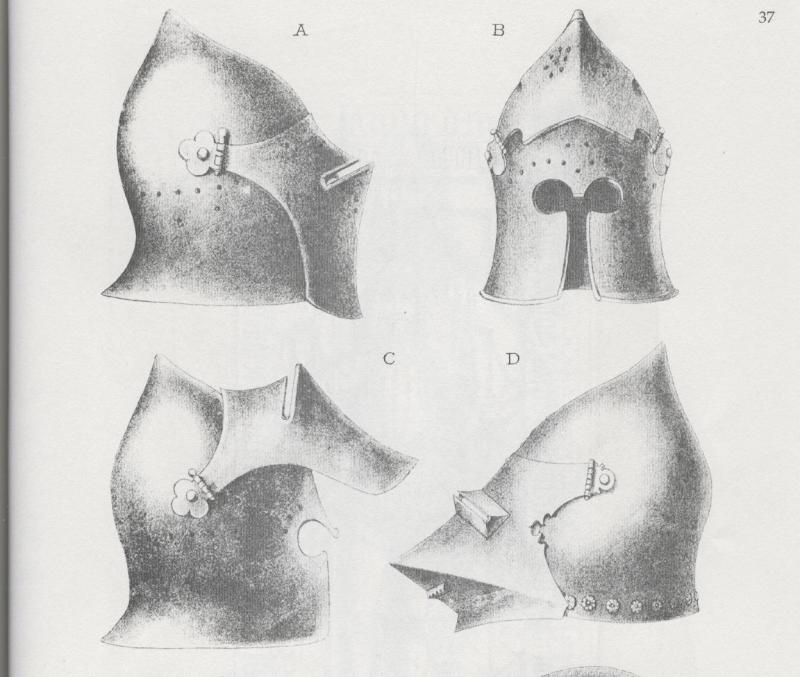I've done some looking around and still not sure if this helm is historically accurate. If so, does anyone have a date/region? All i know is possibly late 14th, somewhere in Italy?
Any help would be appreciated :)


| Daniel Sullivan wrote: |
| The helmet on this figure, displayed in the Met, does not have an attached camail. Would it be classified as a visored barbutte or a basinet? Believe it is has an open face like all basinets and many barbuttes. In the armoury at Churburg there is basinet with a visor similar to one in Christopher's post. Guess my point/question is .. what feature distinguishes one from? The visor, the face opening, the shape of the crown, or an attached camail? The helmet in Paris; is it a composite or homogenous? It is quite possible that no one really knows for certain; we just have an opinion.
Cheers, Dan |
| Daniel Sullivan wrote: |
| Chad,
Knew this harness to be composite, but don't know about the helmet itself. I would tend to call it a barbutte as it does not have a camail. |
| Quote: |
| This armor was assembled and restored in the 1920s using individual elements that had been discovered in the ruins of the Venetian fortress at Chalcis, on the Greek island of Euboea, which had fallen to the Turks in 1470. The purpose was to present a full armor of the style worn about 1400, a period from which no complete armors survive. Distinctive features are the early form of brigandine (a torso defense constructed of numerous overlapping plates riveted inside a doublet) with two large breast halves and brass borders at the edges of the exposed plates. Portions of the brass at the top edge of the left cuisse (thigh defense), the lower edges of the right greave (lower leg defense), and the visor are genuine; the remainder is restored. The helmet, a visored bascinet, is associated with the armor. The velvet covering of the brigandine is modern.
|